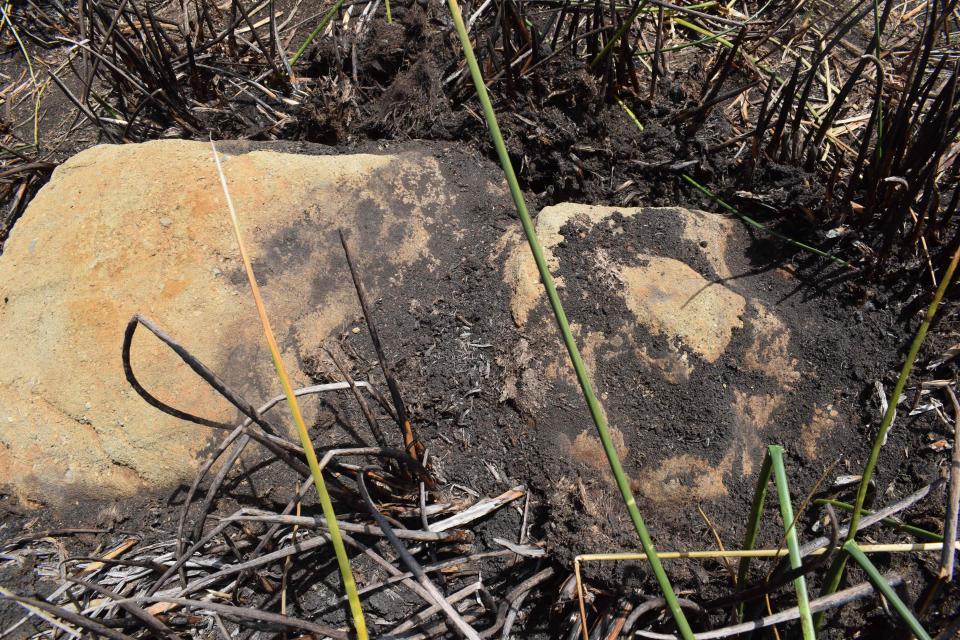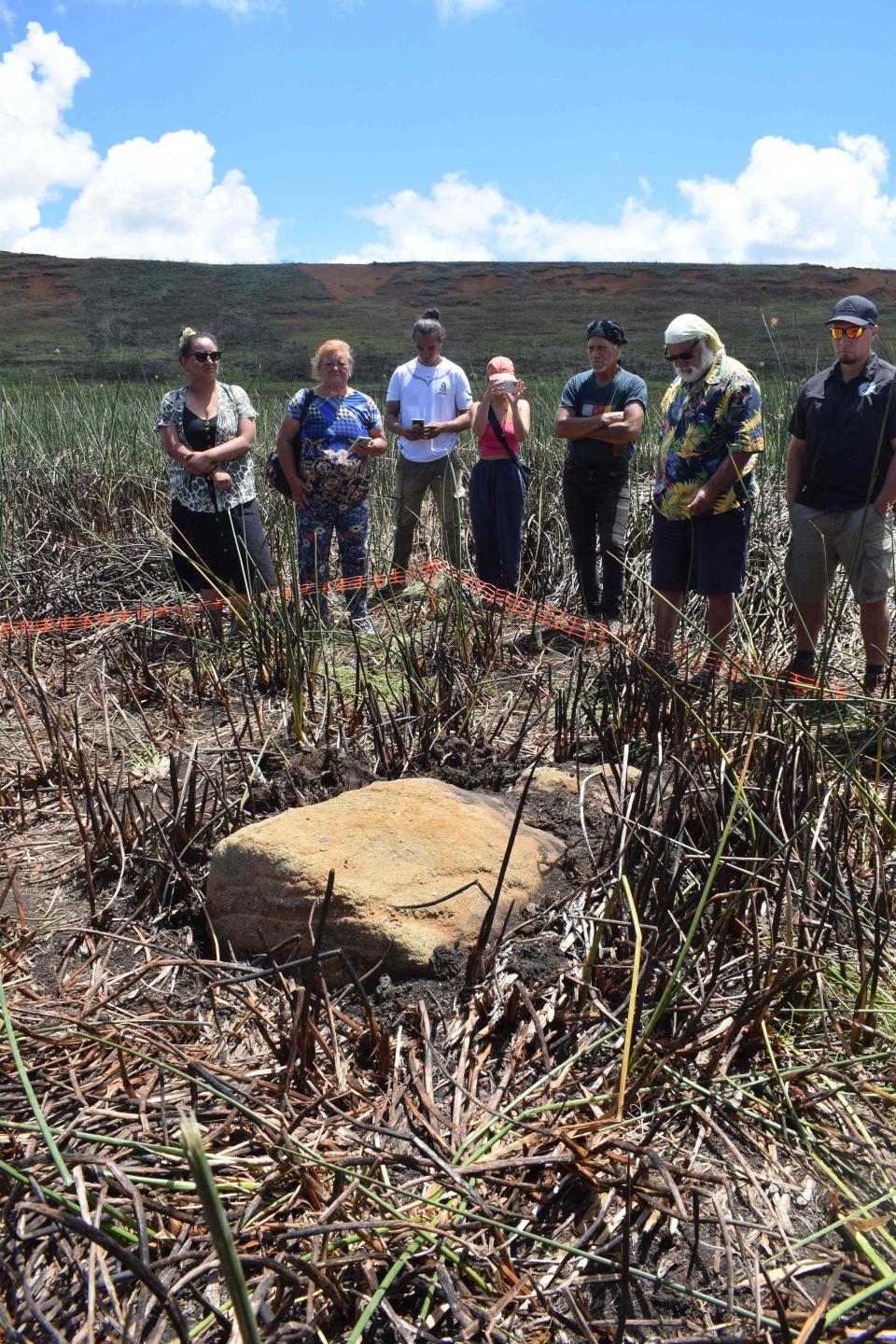An Easter Island 'first': New, indigenous moai statue found in volcano's dried-up lake
Researchers have unearthed a new 5-foot-tall moai statue created by Indigenous Rapa Nui people on Easter Island.
Volunteers from three Chilean universities made the discovery on Feb. 21 in a dry lake bed, according to The Guardian. Scientific volunteers from three Chilean universities collaborating on a marshland restoration project within the Rano Raruku volcano made the rare find.
The laguna, or lake, within the volcano began to dry up in 2018, a member of the Ma’u Henua community told The Guardian. The community manages the Rapa Nui national park that includes the volcano, told The Guardian.
The statue is just over 5 feet tall and was found lying on its side. Researchers told ABC's "Good Morning America" it's a smaller statue, and the team probably will use carbon-14 dating to figure out how old it is.
Called moai, the centuries-old statues are part of a Polynesian tradition to honor ancestors, Terry Hunt, an archaeologist from the University of Arizona, told "GMA."
"There have been no moai ... found in the dry bed or in what was previously a lake, so this is a first," Hunt said.
The statues have distinct, long faces and no legs; many were made from volcanic ash and are near fresh water on the island.
The island's tallest moai statue stands at 33 feet; the statues typically weigh 3 to 5 tons but can weigh up to 80 tons, Hunt said.
Egypt: Ancient Egyptian embalming fluids — researchers decipher the recipe to preserve mummies
Hercules: Larger-than-life, 2,000-year-old Hercules statue discovered in Greece

Moai represent ancestors and connect generations
Moai statues represent ancestors who have passed on, community elder Maria Elena Hotu told "GMA." They create connections between current generations and their ancestors.
According to oral tradition passed down among the island's people, the heavy statues walked themselves, Hunt said.
Today, islanders use rope and their own collective strength to move the moai from side to side to make them appear as if they are walking forward.
The recently discovered moai was “full-bodied with recognisable features but no clear definition," according to a statement from the Ma’u Henua Indigenous Community given to The Guardian.
“It’s a really unique discovery as it’s the first time that a moai has been discovered inside a laguna in a Rano Raraku crater,” the statement said.

Has climate change affected moai statues?
Researchers believe climate-induced changes drying the lake led to this most recent discovery. These changes created an "unusual opportunity" to study the area, Hunt said on "GMA."
There are nearly 1,000 moai in the area, and several have been charred by a forest fire on the island in October, according to The Guardian.
With strong storms and subsequent droughts "and exposure to the elements in general, the statues will weather faster," Hunt said.
"Good Morning America" also reported rising sea levels have sped up the erosion process along the coast, where moai statues stand and watch over the island.
The outlet said islanders are building a retaining wall to help prevent future damage.
Saleen Martin is a reporter on USA TODAY's NOW team. She is from Norfolk, Virginia – the 757 – and loves all things horror, witches, Christmas, and food. Follow her on Twitter at @Saleen_Martin or email her at sdmartin@usatoday.com.
This article originally appeared on USA TODAY: Easter Island discovery: New indigenous statue found in dry lake bed

